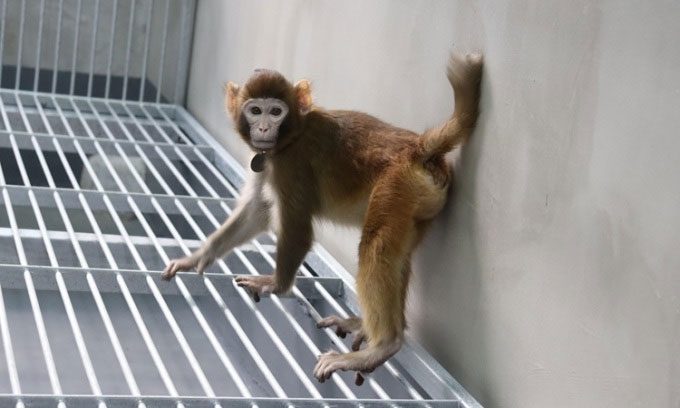Scientists Successfully Clone a Golden Monkey by Providing an Unimpaired Placenta to the Embryo.
Researchers in China have successfully cloned a golden monkey by replacing a defective placenta with a healthy one, according to Live Science. This advanced technique could significantly increase the success rate of cloning. The monkey, named ReTro, is currently 3.5 years old and remains healthy and well-developed, as stated by Qiang Sun, a co-author of the study and a primate neuroscientist at the Center for Brain Science and Intelligent Technology at the Chinese Academy of Sciences.

The healthy 3.5-year-old cloned male golden monkey. (Photo: Zhaodi Liao).
Researchers have previously cloned golden monkeys, but this is the first time they have successfully used the method of somatic cell nuclear transfer, which involves replacing the nucleus of a fertilized egg with the nucleus from a somatic cell of another individual. Somatic cells include all body cells except for reproductive cells. A previous attempt to clone golden monkeys through somatic cell nuclear transfer resulted in a live birth, but the offspring died just 12 hours later.
Golden monkeys (Macaca mulatta) are commonly used in laboratories and medical research due to their close genetic relationship to humans. Cloning this species could help generate non-human primate models with identical genetic backgrounds and gene expression in a short period, according to Sun. This would assist researchers in screening out any effects of genetic variation when testing drugs. The cloning process was detailed in a study published on January 16 in the journal Nature Communications, bringing us closer to improving cloning efficiency in primates and other mammals.
Scientists have used somatic cell nuclear transfer to clone various mammals such as monkeys, sheep, cattle, and dogs. However, the majority of cloned embryos do not survive to birth, often due to defects in the development and structure of the placenta. Approximately 1 – 3% of attempts to produce live offspring through conventional cloning are successful, although the success rate is slightly higher in cattle (5 – 20%).
To address this issue, Sun and colleagues replaced the cluster of cells that typically develop into the placenta from the cloned embryo with similar cells from a normal embryo. These cells, collectively known as trophoblasts, form a healthy placenta that provides nutrients and oxygen to the cloned embryo throughout its development. The experiment led to the birth of a healthy male golden monkey in 2020. Due to common placenta defects in all cloned mammals, the research team predicts that this new method could be applicable to other mammalian species and non-human primates.

















































